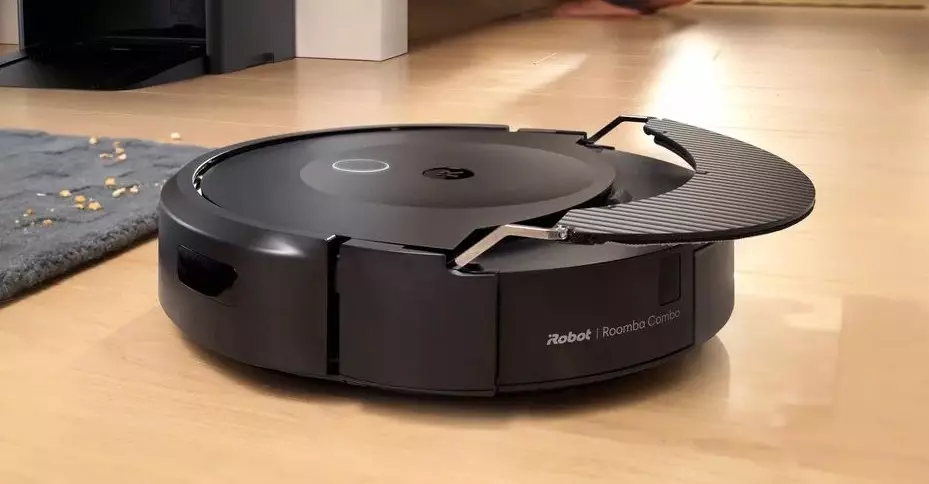In an age where the smart home ecosystem is rapidly expanding, the launch of Apple’s iOS 18.4 marks a significant milestone for device interoperability. Notably, this update facilitates seamless communication between various smart devices, particularly robot vacuums, through the Matter protocol. Matter was founded on the principle of unifying the smart home landscape by allowing devices from different manufacturers to interact more freely. This update is not merely a technical enhancement; it represents a paradigm shift that can reshape how users interact with their home environments.
As a tech enthusiast, it’s fascinating to witness how the integration of technology has evolved from isolated devices to a coherent network that enhances everyday living. With this update, consumers no longer have to juggle between multiple apps to manage their devices; instead, they can consolidate control within the Apple Home app. The ease of use that iOS 18.4 promises not only simplifies day-to-day operations but also adds a layer of sophistication rarely seen in earlier smart home implementations.
Roborock’s Bold Steps Forward
One of the standout players in this transformative landscape is Roborock, known for its innovative and effective robot vacuums. Their announcement about firmware updates aimed at enhancing Matter protocol support across multiple models demonstrates a proactive stance in adopting new technologies. Models like the S8 MaxV Ultra and Qrevo series are set to receive crucial updates that allow them to interact with the Apple Home environment seamlessly.
This proactive approach is vital in today’s tech climate; companies unwilling to keep pace with emerging standards risk being left behind. Roborock’s commitment to improving user experience through these updates isn’t merely business strategy—it’s an acknowledgment of an evolving consumer digital landscape. Users will benefit greatly from the capability to control their vacuums through various Apple devices—be it an iPhone, iPad, HomePod, or Apple Watch—ultimately enhancing smart home convenience.
iRobot: Setting New Standards in Robotic Cleaning
The recent updates from iRobot seem to carry a promise of compatibility that could set a new standard in robotic cleaning technology. Their Roomba Combo 10 Max, designed to work seamlessly within the Apple ecosystem, showcases an understanding of convenience in modern households. The ability to initiate and schedule cleaning tasks using just Siri voice commands is not just a gimmick; it’s a game-changer for multitasking families and busy professionals.
The critical aspect here lies in iRobot’s ability to pivot towards consumer demands while also bridging technological gaps. By adopting the Matter protocol, they not only future-proof their devices but also gain a competitive edge in a rapidly evolving marketplace. This kind of adaptability is essential for companies in the tech sector that wish to remain relevant and impactful.
Ecovacs: A Step Towards Unified Home Cleaning Solutions
Ecovacs isn’t backing down either; their lineup—spanning from the Deebot X2 to the X8—will soon integrate Matter support. However, the rollout of these updates in phases indicates a cautious yet strategic approach often required in tech implementation. The fact that firmware updates will be phased also speaks volumes about the intricacies of ensuring user satisfaction while maintaining operational excellence.
The collaboration between these major brands reinforces the significance of the Matter protocol. By making their devices compatible with various platforms, companies like Ecovacs, Roborock, and iRobot are essentially acknowledging the customer’s desire for flexibility. As the smart home paradigm continues to shift, this interconnectedness not only enhances consumer control but also promotes brand loyalty and trust.
Beyond Basic Features: The Future of Smart Cleaning
Despite the advantages of the Matter integration, it’s essential to note the limitations that come with this reset in smart home technology. For instance, while iOS 18.4 allows basic functions such as starting and stopping cleaning sessions or switching modes, it doesn’t cover advanced functionalities like mapping and zone configuration. Such capabilities remain embedded within the manufacturers’ native apps, potentially creating a fragmented experience for users.
This limitation raises an important question about the future of smart home devices: will the ease of interoperability come at the cost of individual device functionality? As industry standards evolve, it’s crucial for both consumers and manufacturers to engage in a dialogue to ensure that enhanced connectivity does not overshadow the unique benefits each device brings to the table.
In a world that thrives on connectivity, the iOS 18.4 update exemplifies both promise and caution. Fortunate are the users who now find themselves empowered by an ecosystem that, with time, could redefine the concept of home automation in ways yet to be fully imagined.

